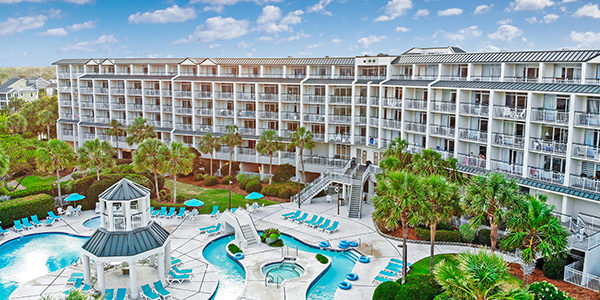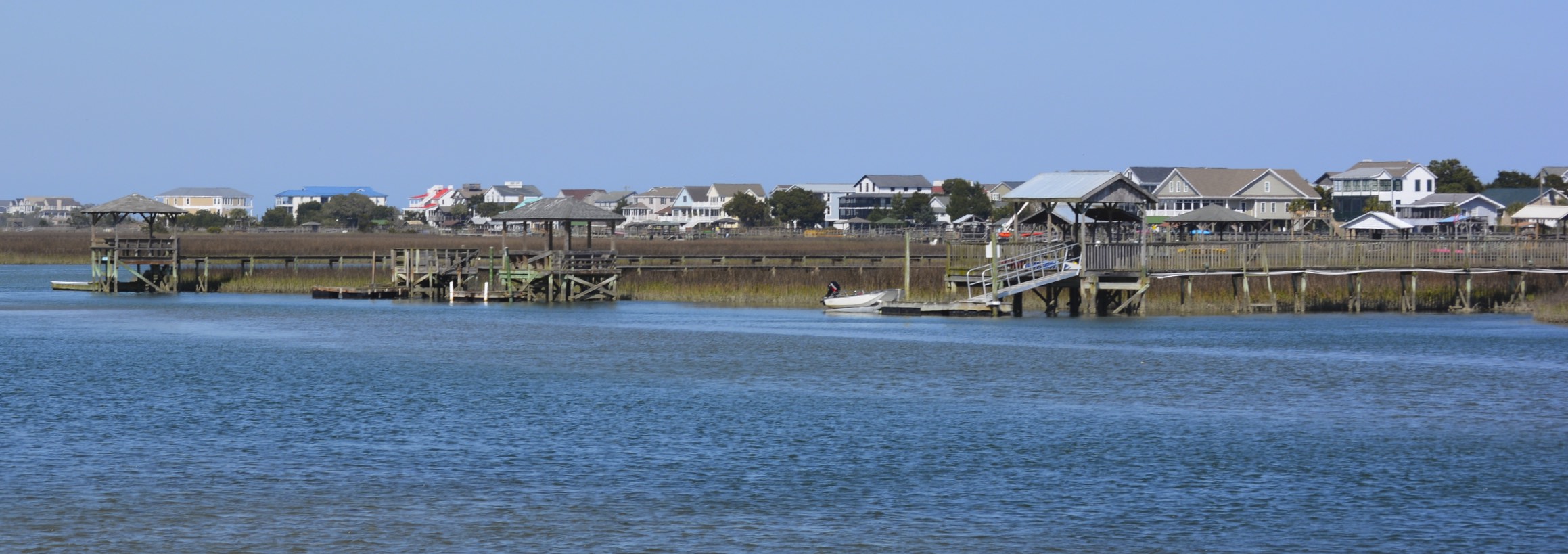
14 Fun Pawleys Island Terms
Pawleys Island has a very rich history dating back to colonial South Carolina. Once a place for plantation owners to go to escape the pangs of dealing with summer mosquitoes and the possibility of malaria, this beautiful town has endured many horrific storms and is known today as a community that prides itself as being “arrogantly shabby.”
While its neighbor Myrtle Beach boasts a wide range of accommodations and attractions that appeal to any vacationer, sometimes the hustle and bustle of the city can be tiring. Those living in Pawleys Island have made sure to help preserve the area by keeping out commercial hotels and leaving Pawleys Island as historic and natural as possible. Therefore, Pawleys Island is an awesome vacation alternative for those who enjoy the scenery of coastal South Carolina but want to stay somewhere a little more laid-back. Find more about Pawleys Island on our Facebook page.
For those of you who would like to visit Pawleys Island but don't know much about the area, we have compiled this list of fun Pawleys Island terms that will help you familiarize yourself with some of the local lingo:
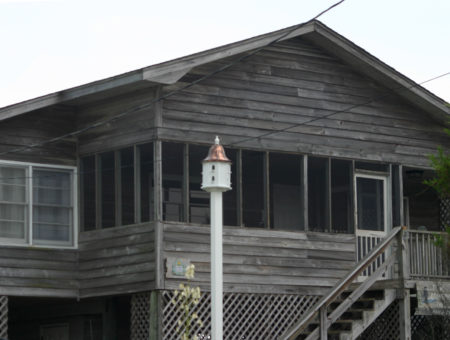
The way that the people of Pawleys Island like to describe their town is “arrogantly shabby.” But why? This term was created by Litchfield restaurateur Mickey Henderson to describe the beautiful, historic yet weather-worn homes found in Pawleys Island. We think that the wear caused by hurricanes and bad storms add character to these gorgeous cottages, so being arrogantly shabby is actually a good thing!
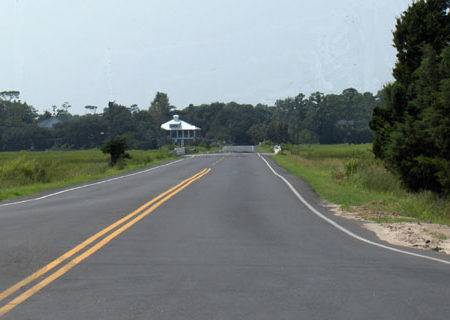
Thankfully, we are able to reach Pawleys Island via road transportation instead of hopping on a ferry every time we want to visit. Pawleys Island is connected to mainland South Carolina by two separate causeways: the North Causeway and the South Causeway. In fact, the South Causeway was built by slaves under the orders of R.F.W. Allston in 1846.
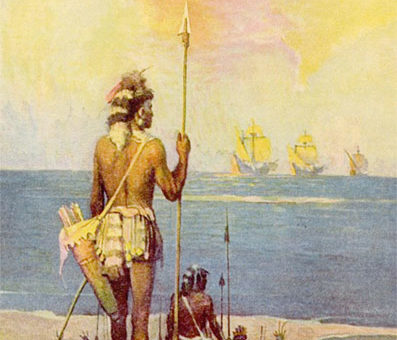
A term that means “the land” and is commonly used by locals. This term comes from the Winyah and Waccamaw native tribes that once inhabited Pawleys Island. While there are no existing members of the Winyah tribe left, the Waccamaw natives still function as a community and are recognized by the state of South Carolina.
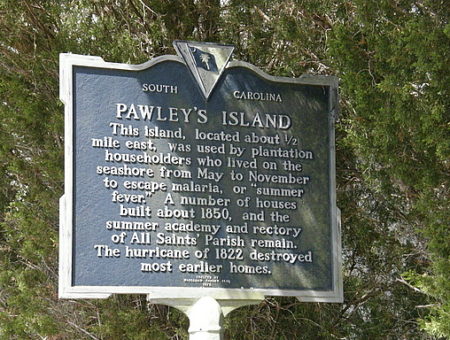
The name Pawleys Island had to come from somewhere, right? The Town of Pawleys Island received its title from George Pawley, a European that settled in the area during colonization. In 1711 George’s father, Percival Pawley, Sr., received a land grant on the Waccamaw Neck. George Pawley owned this land of Pawleys Island and eventually ended up selling pieces of it to plantation owners who wanted to escape malaria since the area had become known as a refuge from mosquitoes.
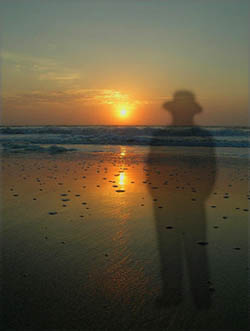
Arguably South Carolina’s most notorious ghost, the Gray Man of Pawleys Island is definitely a benevolent spirit. In fact, people claim that the Gray Man reveals himself to people to warn them of impending hurricanes about to strike land. The first record of his warning occurred in 1822, and the most recent in 1989, and it is said that he has appeared before all 5 major storms that have struck Pawleys Island between those two time periods. Those who have seen the Gray Man describe him as a man dressed in all gray clothing, and he is usually seen on the beach waving to boats of stepping out from the sand dunes to warn beach-goers and fisherman of the inevitable storm.
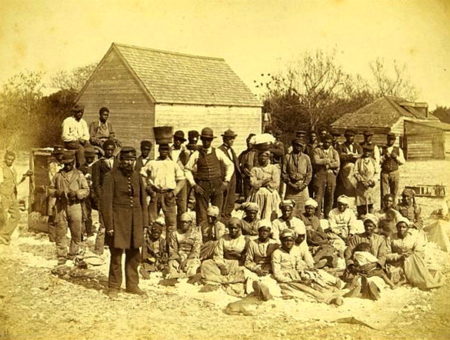
Since the Pawleys Island area was refuge for plantation owners to get away from malaria and mosquitoes, it is no surprise that the Gullah-Geechee culture has ties to the area. The Gullah-Geechee community was formed when enslaved Africans from different parts of Africa had to come together and communicate on plantations. By taking aspects of English and various African dialects, the Gullah language was born. The Gullah-Geechee community still thrives today along coastal South Carolina and Georgia, and is quite a unique and celebrated culture.
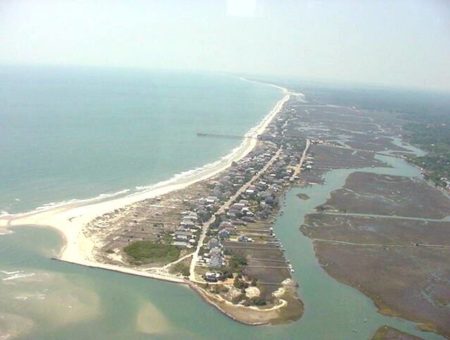
An inlet is a break in the shoreline that is caused by a long and narrow connection of water from an ocean, river, or lake to another body of water. In the case of Pawleys Island, the inlet branches off from the Atlantic Ocean to the Pawleys creek.
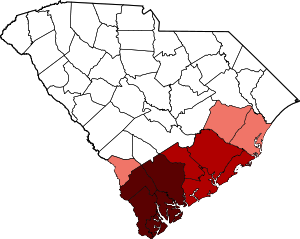
Though the term “Lowcountry” may be used differently throughout the region, it technically refers to a geographical area ranging from Pawleys Island in South Carolina all the way down to the Savannah River in Georgia. Appropriately named the Lowcountry due to its low-elevation, this 80 mile stretch of land features moss-draped oaks, salt marshes, and old plantation homes. And, of course, who can forget Lowcountry cooking? A cuisine based off of the land and resources of the Lowcountry, Lowcountry food consists of famous dishes such as Frogmore Stew, Hoppin’ John, she-crab soup, and more.
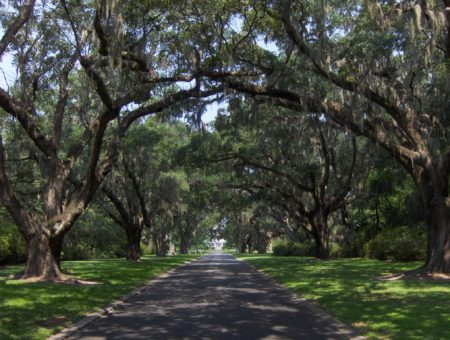
A true and stunning image of the Lowcountry lies in the Spanish moss-draped Live Oaks that pepper Coastal South Carolina and Georgia. And Pawleys Island is no stranger to these beautiful trees. If you happen upon a moss-draped Live Oak while visiting the Pawleys Island area, be cautious of touching the Spanish moss that has fallen from the limbs; it may contain chiggers! While chiggers don’t dwell in Spanish moss while it is on a tree, once the Spanish moss falls to the ground it is often infested with these little, red, biting bugs.
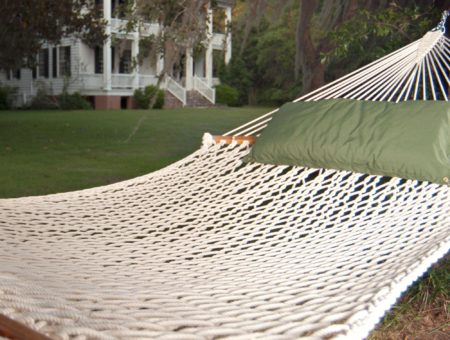
Besides being a beautiful getaway destination, Pawleys Island is well-known for hammocks. In the late 1800’s, a particular riverboat captain named Joshua John Ward (a.k.a. Cap’n Josh) was doing his normal rounds of delivering rice and other cargo from inland South Carolina plantations to Georgetown when he tried to sleep on the grass-filled mattress that most work boats were equipped with. After struggling with the heat and toughness of the mattress, Cap’n Josh decided to give canvas and rope hammocks a try, finding that both designs available at the time were flawed, hot, and uncomfortable. So, in 1889, he decided to create his own. And with a new design, the Pawleys Island Rope Hammock was born, featuring knot-free hammock body, heavy cotton rope in a double-latch weave, individual ropes that create a lattice-like design, and spreader bars.
To this day, Cap’n Josh’s design is still being sold at the Original Pawleys Island Rope Hammock shop.
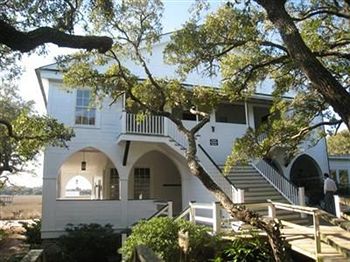
This historic Pawleys Island inn has a rich background. Built in 1858 by Plowden Weston, this property went through different ownership until 1901 when it was bought by the Atlantic Coast Lumber Company. The company used this property as a vacation house for its employees, until they sold it to a new owner and the house was officially named the Pelican Inn. Even now, the Pelican Inn remains as a favorite accommodation in the Pawleys Island area, and, in addition to its rich history, the Pelican Inn boasts a few ghost stories including ties to the Gray Man and stories of two Boston Terriers that haunt the inn.
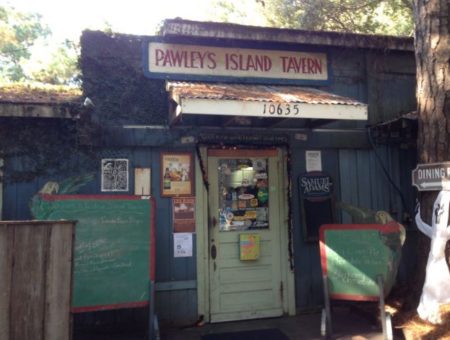
Known to the locals as PIT, the Pawleys Island Tavern has become a favorite eatery over the years. Located in the Island Shops, the PIT is a great place to go if you want to enjoy a beer, have a delicious meal, or kick back and watch some live music. The Pawleys Island Tavern prides itself on its laid-back, family-friendly, Lowcountry atmosphere.
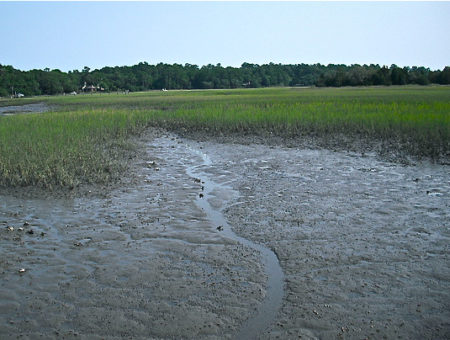
If you’re ever driving along the coast of the South Carolina Lowcountry and catch a whiff of a strange scent similar to rotten eggs, then you’re probably smelling pluff mud. This mud is actually a product of decaying wildlife such as marine life and spartina grasses, and is characterized as being slippery, shiny, and brown/gray in color. In the past, pluff mud was instrumental in the rice growing industry, but now, the smell and feel of pluff mud reminds Lowcountry natives of home. Perhaps the best part of pluff mud is how it sucks everything down into it. If you’re ever brave enough to try to traverse the surface of an area of pluff mud, be sure not to wear shoes you actually care about because –most likely—you will lose one, or both!
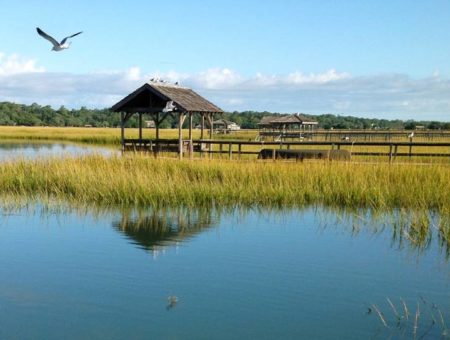
A salt marsh, also known as a tidal marsh, is a coastal wetland that is flooded (and drained) by the changing of the ocean tides. Marshes contain a large amount of salt-tolerant flora such as grasses, shrubs, and small plants which are planted in soil such as peat or pluff mud. Salt marshes are important for the ecosystem and they also provide coastal protection. Pawleys Island is disconnected from the mainland by a salt marsh, and is only accessibly by the North and South Causeways.
